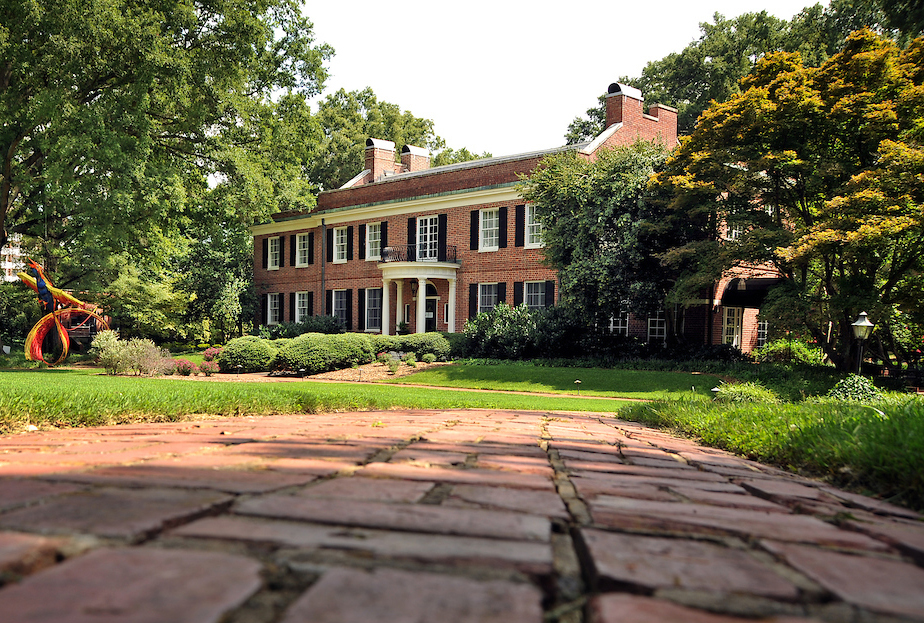History and Nostalgia

The Gregg Museum of Art & Design, when moved to the Chancellor’s Residence, became the next phase in the legacy of this beautiful historic site and in the history of NC State University. The renovation of the residence, as managed by the Freelon Group, retained as much of the character of the original building as possible, while adding to its significance by creating spaces in which the Gregg Museum’s extensive art collection can be presented.
The residence has a rich history all its own, given that ten families have lived there and left their mark on the house itself.
Here are some facts about the Historic Residence;
- Campus architect Hobart Upjohn had a distinguished pedigree – he was the architect for multiple churches in North Carolina and the grandson of Richard Upjohn, the architect for Trinity Church on Wall Street, New York NY.
- When the house was built, NC State University (then called State College) had only 1,400 students, and only 21 of them were women
- The total cost of building the house in 1928 was only $29,997.38. The legislature had approved funds for construction “not to exceed $30,000”. Amazingly, they came within $2.17 of this amount!
- It took approximately 180,000 bricks to construct the Historic Residence. They were supplied by the Cherokee Brick Company.
- The site of the house was chosen specifically to represent a junction of town and gown – it is know to this day as the “gateway” to NC State campus.
- The house is designed to have two “faces”, following in the tradition of many country estates: the public facing entrance with a portico opening under a stair case, and the more open, light-filled entrance to the rear overlooking a natural view – in this case, the Gregg garden.
- A Vice President for Abraham Lincoln, Andrew Johnson, had a house on the grounds of Pullen Park – and children of the household often played around the historic home until it was relocated to Mordecai Park in 1975.
- During World War II, the residence was a gathering place for students, faculty, and friends of the college – essentially becoming the living room of the campus.
- In the 1950s, Chancellor Bostian was one of the key leaders in the forming of the Research Triangle Park – originally established as a research park between State College (now NC State University), UNC Chapel Hill and Duke University. He was also a figure in the civil rights movement of the time, welcoming African Americans to the College as students and marching band members.
- In 1965, and under the guidance of John Caldwell, State College was renamed NC State University at Raleigh, after a previous suggestion of the name “University of North Carolina at Raleigh” was roundly rejected by students, faculty and alumni.
- Mrs. Hattie Ruffin, who was the housekeeper at the Residence, was also known as a fabulous Southern cook. Her recipe for Corn Pudding was well-loved, and she was often called upon to cater parties and gatherings at the Chancellor’s Residence, sometimes for groups of 300 people or more.
- The famed composer Aaron Copland visited and stayed at the residence during his project “Big Red Barn” in 1976.
- In 1998, the first woman chancellor, Marye Anne Fox, came to NC State University – and hosted annual Christmas and graduation parties with great success with the help of her family and staff.
- Chancellor Randy Woodson and his wife Susan – an artist – brought art into the residence from the Gregg Museum collection during their brief stay.